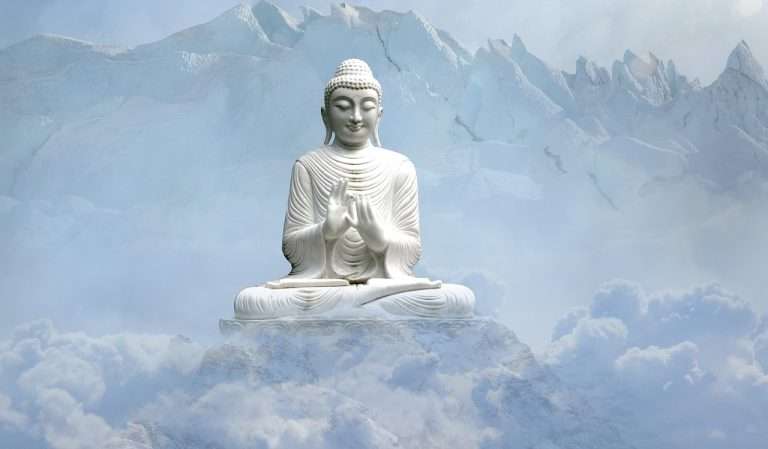Introduction
Journey to the West, one of the most famous and enduring pieces of Chinese literature, has captured the hearts and imaginations of readers for centuries. This epic tale, also known as “Monkey” or “Monkey King,” is an extraordinary journey filled with adventure, supernatural beings, and profound teachings. In this article, we will delve deep into the real story behind Journey to the West, exploring its origins, characters, and enduring significance.
The Origins of Journey to the West
1. Ancient Roots
“Journey to the West,” known in Chinese as “Xiyouji” (西游记), is a literary masterpiece that has captured the imagination of readers for centuries. While the novel itself was penned by Wu Cheng’en during the Ming Dynasty and first published in the 16th century, its origins can be traced back to a much earlier time, to a legendary pilgrimage that unfolded during the Tang Dynasty in the 7th century.
At the heart of the novel’s creation lies the real-life journey of the Buddhist monk Xuanzang, also known as Tripitaka. Xuanzang’s pilgrimage, often referred to as the “Great Tang Records on the Western Regions,” serves as the foundation upon which “Journey to the West” was built.
The Tang Dynasty Pilgrimage
During the Tang Dynasty (618-907 AD), China was a thriving empire, not only in terms of political and economic influence but also as a hub of culture and religion. Buddhism had taken root in China, and the pursuit of Buddhist knowledge and scriptures was of paramount importance.
Xuanzang, a devout Buddhist monk, was driven by a profound desire to acquire authentic Buddhist scriptures. However, these sacred texts were not readily available in China, and he believed that the most accurate and complete scriptures could only be found in India, the birthplace of Buddhism.
The Motivation and Challenges
Xuanzang’s motivation for embarking on this arduous journey was twofold. Firstly, he sought to bring back these scriptures to China, where they would not only enhance his own spiritual knowledge but also benefit the Buddhist community and the people of China as a whole. Secondly, he aimed to address the discrepancies and inaccuracies that had arisen in Chinese Buddhist texts, which had been copied and translated multiple times over the centuries.
However, Xuanzang’s journey was no ordinary pilgrimage. It was an extraordinary odyssey that spanned thousands of miles and took him through some of the most treacherous terrains of Central Asia, including deserts, mountains, and harsh climates. Along the way, he encountered various perils, from bandits to harsh natural conditions, and his faith and determination were continuously put to the test.
A Quest for Enlightenment
Xuanzang’s pilgrimage was not just a physical journey; it was a profound spiritual quest. It embodied the core principles of Buddhism, which emphasize the pursuit of wisdom and enlightenment. Xuanzang’s unyielding dedication to his mission, his unshakable faith, and his unwavering commitment to truth and knowledge mirrored the very essence of Buddhist teachings.
Influence on “Journey to the West”
It is against this backdrop of Xuanzang’s epic pilgrimage that “Journey to the West” was born. Wu Cheng’en, the author of the novel, drew inspiration from Xuanzang’s real-life exploits to craft a fictional yet deeply allegorical narrative. In “Journey to the West,” Xuanzang becomes the character Tripitaka, and his journey to India is filled with supernatural adventures, challenges, and encounters with iconic figures such as the Monkey King, Sun Wukong, who represents the monkey deity Hanuman from the Indian epic “Ramayana.”
In essence, “Journey to the West” is a fantastical retelling of Xuanzang’s pilgrimage, infused with elements of folklore, mythology, and allegory. It combines the historical and the mythical to create a timeless narrative that not only entertains but also imparts profound lessons about the human condition, the pursuit of enlightenment, and the enduring power of faith.
2. Spiritual Quest
Journey to the West is not just a tale of adventure and mythical creatures; it is a profound spiritual allegory that explores the depths of human nature and the quest for enlightenment. At its core, the story revolves around the spiritual journey of Xuanzang, also known as Tripitaka, a Buddhist monk from the Tang Dynasty.
The Symbolism of Xuanzang’s Pilgrimage
Xuanzang’s pilgrimage to India symbolizes a profound spiritual quest. His mission is to retrieve sacred Buddhist scriptures from India, a quest that is laden with symbolic meaning. These scriptures are not mere books; they represent the profound wisdom, teachings, and enlightenment that Buddhism offers. Bringing these scriptures back to China is not just a physical journey; it is a journey of the soul.
Perils and Trials
Xuanzang’s journey is not a straightforward one. He faces numerous perils and trials along the way. These challenges are not just physical obstacles but also represent the inner struggles that one encounters on the path to spiritual awakening. The various monsters, demons, and supernatural beings that obstruct his path can be seen as manifestations of the temptations and distractions that test one’s commitment to the spiritual path.
The Quest for Enlightenment
Xuanzang’s ultimate goal is enlightenment, both for himself and for the people of China. He believes that by bringing the sacred scriptures back to his homeland, he can spread the teachings of Buddhism and bring salvation and wisdom to his fellow countrymen. This mirrors the Buddhist ideal of Bodhisattva, one who seeks enlightenment not just for themselves but for the benefit of all sentient beings.
The Journey as an Inner Transformation
While the physical journey takes Xuanzang across treacherous landscapes and through encounters with supernatural beings, it also reflects an inner transformation. As he faces and overcomes challenges, Xuanzang evolves spiritually. His character represents the concept of self-improvement and personal growth that is central to Buddhism.
The Role of Faith
Throughout the story, Xuanzang’s unwavering faith in his mission and the Buddhist principles is evident. This faith sustains him during moments of doubt and fear. It illustrates the importance of faith on the spiritual journey, where belief in the ultimate goal can provide the strength to overcome adversity.
Lessons for Readers
The spiritual quest in Journey to the West offers profound lessons for readers. It encourages introspection and reflection on one’s own spiritual journey. The challenges and trials faced by Xuanzang and his disciples are relatable to the struggles of everyday life. The story teaches us that the path to enlightenment is not without obstacles but is worth pursuing.
In essence, Journey to the West is a timeless tale that goes beyond its surface narrative of adventure and fantasy. It is a spiritual odyssey that invites readers to contemplate their own quest for wisdom and enlightenment. Xuanzang’s pilgrimage is a reminder that the pursuit of knowledge, self-improvement, and spiritual awakening is a journey filled with challenges and trials, but it is a journey that can ultimately lead to profound transformation and enlightenment.
The Iconic Characters
3. Sun Wukong, the Monkey King
Sun Wukong, often referred to as the Monkey King, stands as one of the most iconic and beloved characters in Chinese literature and folklore. His origins are nothing short of extraordinary, and his journey throughout “Journey to the West” is both entertaining and laden with profound insights. In this section, we delve deeper into the captivating character of Sun Wukong.
Birth from Stone
Sun Wukong’s extraordinary tale begins with his unconventional birth. Unlike most characters in mythology, he was not born from a human or divine source. Instead, he emerged from a stone that had been nurtured by the elements for centuries. This unique birth signifies his innate connection to the natural world, and it foreshadows the immense power he would come to possess.
Incredible Powers
What sets Sun Wukong apart from the rest of the characters in the story are his incredible powers. Endowed with superhuman strength, agility, and the ability to transform into various shapes and sizes, he possesses an arsenal of skills that make him a formidable force. He wields a magical staff that can change its size at will, allowing him to perform astounding feats. This staff, known as the Ruyi Jingu Bang, was originally the pillar of the East Sea Dragon King’s palace, further emphasizing Sun Wukong’s connection to the natural world.
Mischievous and Loyal
Despite his immense power, Sun Wukong is far from being a one-dimensional character. He is portrayed as mischievous, rebellious, and often defiant of authority. In his early encounters with the heavens and gods, he challenges the established order, even going as far as stealing the heavenly peaches and elixirs of immortality. His mischievous antics infuse the story with humor and playfulness, making him a relatable and endearing character.
However, beneath his mischievous exterior lies unwavering loyalty. Sun Wukong’s journey takes a significant turn when he encounters the Tang Monk, Xuanzang. Despite initially causing trouble for Xuanzang, he eventually becomes the monk’s most loyal disciple. This transformation showcases Sun Wukong’s capacity for change and growth, highlighting an essential theme of personal development and enlightenment.
The Quest for Enlightenment
Sun Wukong’s journey to attain enlightenment is one of the central themes of “Journey to the West.” While his initial actions are driven by a desire for power and recognition, his encounters and experiences on the pilgrimage with Xuanzang gradually lead him towards a deeper understanding of himself and the world around him.
As he faces numerous trials and challenges during their journey, Sun Wukong learns valuable lessons about humility, compassion, and selflessness. He discovers that true strength lies not only in physical prowess but also in the mastery of one’s inner demons and desires. This transformation from a mischievous troublemaker to a wise and loyal disciple exemplifies the overarching message of personal growth and spiritual enlightenment that underpins the entire narrative.
4. Zhu Bajie, the Pig
In the captivating epic of “Journey to the West,” Zhu Bajie, affectionately known as Pigsy, emerges as a distinctive character who adds both humor and depth to the story. Pigsy is one of Xuanzang’s loyal disciples, and his portrayal as a gluttonous humanoid pig with evident flaws serves a profound purpose in conveying the message that even those with imperfections can embark on a transformative journey towards spiritual growth.
The Physical and Personal Imperfections
At first glance, Pigsy’s physical appearance is strikingly unconventional. His appearance as a pig-human hybrid immediately sets him apart from the other disciples and serves as a reminder of his past misdeeds. Pigsy’s transformation into this peculiar form is a result of his own past mistakes and indulgence in hedonistic pleasures. He is a character deeply marked by his own imperfections, and his appearance symbolizes the consequences of his earlier actions.
The Gluttonous Nature
One of Pigsy’s most defining traits is his insatiable appetite. He is notorious for his love of food, constantly indulging in delicious meals. This gluttony often leads to comedic situations, where his desires clash with the group’s mission. However, this very flaw provides a relatable aspect to Pigsy’s character. Many readers can identify with the struggle of battling their own desires and temptations while striving for a higher purpose.
A Flawed Character’s Redemption
Despite his flaws, Pigsy’s character arc is one of redemption and personal growth. His presence within Xuanzang’s group is a testament to the belief that everyone has the potential for transformation and enlightenment, regardless of their past mistakes. Pigsy’s journey is not just a physical pilgrimage; it is a spiritual one as well.
Striving for Spiritual Growth
Throughout the journey, Pigsy learns to control his impulses and prioritize the greater mission of obtaining the sacred scriptures. His determination to overcome his gluttony and other shortcomings reflects a universal theme of self-improvement and the human capacity for change. Readers are reminded that we all carry our own imperfections and burdens, but it is our willingness to confront and grow beyond them that defines our character.
Unity in Diversity
Pigsy’s presence within the group of disciples, each with their unique traits and flaws, underscores the idea that diversity and acceptance are essential on the path to enlightenment. Xuanzang’s acceptance of Pigsy, despite his imperfections, symbolizes the compassion and inclusivity that are central to Buddhist teachings. It reinforces the notion that spiritual growth is not a solitary endeavor but a collective journey where individuals support and uplift one another.
Pigsy’s Contribution to the Narrative
Pigsy’s character also adds a layer of complexity and richness to the story’s narrative. His humorous antics provide comic relief amidst the challenges and dangers the group faces. This balance of humor and profundity makes “Journey to the West” a multi-dimensional tale that can be enjoyed by readers of all ages.
In conclusion, Zhu Bajie, or Pigsy, in “Journey to the West” is much more than a comical character; he is a symbol of hope and redemption. His imperfections serve as a reminder that all individuals, regardless of their flaws, have the potential to embark on a transformative journey towards spiritual growth. Pigsy’s character enriches the story, reinforcing the idea that unity, acceptance, and the pursuit of self-improvement are integral aspects of the human experience and our quest for enlightenment.
5. Sha Wujing, the Sand Monk
In the epic tale of Journey to the West, the character of Sha Wujing, often referred to as the Sand Monk or Friar Sand, plays a vital role in the group of pilgrims led by Xuanzang. As the third disciple in this remarkable journey, Sha Wujing’s character adds depth and complexity to the narrative, symbolizing themes of humility, redemption, and the universal possibility of seeking enlightenment.
The Origins of Sha Wujing
Sha Wujing’s character is intriguing because he was not always a humble monk-like figure. In his previous life, he held the prestigious position of a celestial general in the heavenly realm. However, due to a transgression that led to a series of unfortunate events, he was banished from the heavens and transformed into his current form—a humble monk with a sand-colored complexion.
Humility in Character
One of the defining qualities of Sha Wujing is his humility. Despite his celestial origins and previous status, he willingly accepts his punishment and the role of a disciple in Xuanzang’s journey. This humility is in stark contrast to his fellow disciples, Sun Wukong (the Monkey King) and Zhu Bajie (the Pig), who each have their own distinct personalities and flaws.
Sha Wujing’s humility serves as a reminder that even those who have fallen from grace can find purpose and redemption in their journey towards enlightenment. It reinforces the idea that humility is a fundamental virtue on the path to self-discovery and spiritual growth.
The Theme of Redemption
Sha Wujing’s transformation from a celestial general to a humble monk is a powerful symbol of redemption. His past mistakes and subsequent punishment are indicative of the consequences of arrogance and disobedience, common themes in Chinese folklore and philosophy.
As part of Xuanzang’s quest to retrieve sacred Buddhist scriptures, Sha Wujing is given the opportunity to redeem himself through service and self-improvement. His willingness to undertake this arduous pilgrimage demonstrates that redemption is attainable, regardless of one’s past actions. This theme of redemption resonates deeply with readers, as it offers hope and the belief that no one is beyond the chance for personal transformation.
Embracing the Journey
Throughout the epic, Sha Wujing embraces the challenges of their journey with unwavering dedication. He faces countless trials and obstacles alongside his fellow disciples, and his role in the group is significant, even if less flashy than that of Sun Wukong or Zhu Bajie. Sha Wujing’s steadfast commitment to the quest emphasizes the importance of perseverance, teamwork, and mutual support on the path to enlightenment.
The Journey and Adventures
6. Trials and Challenges
In the timeless Chinese classic, Journey to the West, authored by Wu Cheng’en during the Ming Dynasty, the narrative unfolds as a pilgrimage of the Tang Dynasty Buddhist monk Xuanzang and his three disciples: Sun Wukong (the Monkey King), Zhu Bajie (the Pig), and Sha Wujing (the Sand Monk). As they embark on their journey to India to retrieve sacred Buddhist scriptures, they encounter a series of trials and challenges that serve as metaphors for the inner struggles and obstacles one faces on the path to enlightenment.
Supernatural Orchestration
One of the most captivating aspects of these trials and challenges is that they are often orchestrated by supernatural beings. These beings, while mystical and powerful, symbolize the various inner demons and temptations that individuals encounter in their quest for spiritual growth. These trials are not mere physical obstacles but tests of character, morality, and inner strength.
Temptations and Distractions
Throughout the journey, Xuanzang and his disciples are lured into situations that test their resolve and commitment to their noble mission. For instance, Sun Wukong, with his extraordinary abilities, is frequently tempted by offers of power, recognition, and prestige. These temptations represent the allure of ego and material desires that can divert one from the path of enlightenment.
Battles and Conflicts
In addition to temptations, the group faces formidable adversaries, such as demons, monsters, and malevolent spirits. These battles are not only physical but also psychological. They symbolize the inner conflicts that arise when confronting one’s fears, doubts, and inner demons. Each encounter serves as a lesson in overcoming one’s own limitations and fears.
Lessons in Perseverance
The trials and challenges in Journey to the West highlight the importance of perseverance and determination on the path to enlightenment. Xuanzang and his disciples continually press forward, even in the face of seemingly insurmountable odds. Their unwavering commitment teaches readers that the journey to spiritual growth is not without difficulties but is a test of one’s resilience and resolve.
Symbolism and Allegory
The trials and challenges are rich in symbolism and allegory. They are not just fantastical adventures but represent the universal human experience. Sun Wukong’s battles with celestial deities mirror the inner conflict between ego and humility, while Zhu Bajie’s encounters with seductive spirits reflect the struggle with desires and distractions.
Transformation and Growth
As the group faces and overcomes these trials, they undergo significant transformations. Each character evolves, shedding their flaws and embracing qualities that align with their ultimate goal of enlightenment. This transformation is a testament to the power of self-reflection and the capacity for personal growth, even in the face of adversity.
7. Lessons in Perseverance
Within the pages of Journey to the West, the characters embark on a journey that is not only physical but also deeply spiritual. Their adventures, often perilous and filled with supernatural challenges, serve as metaphors for the trials and tribulations that individuals encounter on their own personal spiritual journeys. This theme underscores the importance of perseverance in the face of adversity, teaching profound life lessons to readers.
The Symbolic Adventures
Throughout the narrative, Xuanzang, Sun Wukong (the Monkey King), Zhu Bajie (the Pig), and Sha Wujing (the Sand Monk) find themselves confronted with a multitude of challenges. These challenges are not merely physical obstacles but symbolic representations of the inner struggles that humans face on their paths toward self-discovery and enlightenment.
The characters’ journey to retrieve sacred Buddhist scriptures from India is beset by demons, gods, and other supernatural beings who aim to obstruct their progress. Each encounter is a test of their character and resolve, serving as a mirror to the challenges people face in their own lives.
Relying on Inner Strength
One of the central messages of Journey to the West is the idea that true strength comes from within. Sun Wukong, despite his immense physical powers, learns that his greatest strength lies not in his ability to defeat foes with brute force, but in his inner wisdom and self-discipline. This realization is a testament to the transformative power of perseverance.
Similarly, Zhu Bajie, with his gluttonous tendencies and flawed character, must constantly strive to overcome his weaknesses. His journey illustrates that even those with imperfections can work towards self-improvement and spiritual growth through unwavering determination.
The Wisdom of Perseverance
As the characters face trials that seem insurmountable, readers are reminded of the value of resilience. The obstacles they encounter symbolize life’s challenges—temptations, distractions, and adversities that can deter individuals from their chosen paths. It is through their unwavering determination that they conquer these challenges, imparting a profound lesson in tenacity.
Journey to the West teaches us that adversity is not to be feared but embraced as an opportunity for growth. The characters’ experiences mirror our own struggles in the real world, emphasizing that, like them, we must rely on our inner strength and perseverance to overcome obstacles and continue on our spiritual journeys.
An Everlasting Message
The enduring appeal of Journey to the West lies in its ability to resonate with readers across generations and cultures. The lessons in perseverance are universal and timeless. They remind us that no matter how daunting our trials may seem, with determination and inner strength, we can overcome them and emerge stronger and wiser.
In a world where challenges and uncertainties abound, Journey to the West serves as a beacon of hope and inspiration. It reminds us that the path to self-discovery and enlightenment is not a straightforward one; it is fraught with difficulties. However, it is precisely these challenges that shape us and enable us to grow.
Enduring Significance
8. Cultural Impact
The cultural influence of “Journey to the West” is nothing short of remarkable. This epic tale has not only entertained generations but has also significantly shaped the cultural landscape of China and beyond. Here, we explore how this literary masterpiece has inspired various forms of art and media, making it a cornerstone of Chinese folklore.
1. Literary Legacy
“Journey to the West” is not just a story; it is a literary masterpiece. Wu Cheng’en’s compelling narrative and rich character development have made it a beloved classic in Chinese literature. Its influence is evident in countless subsequent works of fiction, with authors drawing inspiration from its themes, characters, and storytelling techniques. This enduring legacy has cemented the novel’s place in the annals of Chinese literature.
2. Iconic Characters
Central to the novel’s cultural impact are its iconic characters, especially the irrepressible Monkey King, Sun Wukong. His charismatic and complex character has become a symbol of bravery, wit, and the quest for self-improvement. Sun Wukong’s enduring popularity can be seen in various art forms, where he often takes center stage, captivating audiences with his adventures and wisdom.
3. Adaptations Galore
Perhaps the most tangible evidence of “Journey to the West’s” cultural impact lies in its numerous adaptations. The novel has served as fertile ground for creative minds across different media platforms.
A. Cinema
The silver screen has witnessed a plethora of adaptations, both traditional and contemporary. Classic films like “Monkey Goes West” and more recent productions like “The Monkey King” have brought the story to life, introducing new generations to the magic of Monkey and his companions.
B. Television
Television series have also embraced the tale’s timeless appeal. Multiple TV adaptations, such as “Journey to the West” (1986) and “The New Legends of Monkey” (2018), have gained widespread acclaim. These series have not only catered to the nostalgia of older generations but have also captured the imaginations of younger viewers.
C. Video Games
In the digital age, video games have taken “Journey to the West” to interactive realms. Games like “Enslaved: Odyssey to the West” and “Journey to the West: Conquering the Demons” allow players to immerse themselves in the fantastical world of Xuanzang and his disciples. These adaptations have successfully merged storytelling with interactive gameplay, further expanding the story’s reach.
4. Icon of Chinese Folklore
“Journey to the West” has seamlessly integrated itself into Chinese folklore. The Monkey King, in particular, has become an enduring symbol of resilience, adaptability, and the indomitable spirit. His image is ubiquitous in Chinese culture, adorning festivals, celebrations, and even official documents. His transformation from a literary character to a cultural icon is a testament to the profound impact of this epic tale.
9. Lessons for Humanity
Journey to the West serves as a mirror reflecting the various facets of human nature. Each character embodies certain traits and struggles that are universally relatable. This relatability allows readers to connect with the characters on a personal level and, in turn, learn valuable life lessons.
Importance of Self-Discovery
One of the central themes of the story is the journey towards self-discovery. Xuanzang, the Monkey King (Sun Wukong), Zhu Bajie, and Sha Wujing embark on this arduous pilgrimage not only to retrieve sacred scriptures but also to understand themselves better. This mirrors our own lifelong quest to discover our true selves, our purpose, and our potential.
The Monkey King, in particular, undergoes a remarkable transformation. Initially, he is a mischievous and impulsive character, representing the untamed aspects of our own personalities. However, through his trials and tribulations, he learns the importance of discipline, humility, and the value of self-improvement. This evolution demonstrates that change and growth are possible for anyone willing to embark on their personal journey of self-discovery.
The Power of Self-Improvement
Journey to the West underscores the significance of self-improvement as a means to attain enlightenment and overcome life’s challenges. Xuanzang and his disciples continually strive to become better versions of themselves as they face countless obstacles on their path.
Zhu Bajie, who initially appears gluttonous and shallow, exemplifies the potential for transformation. His journey is a testament to the idea that even those with perceived flaws can evolve and develop virtues. This resonates with readers, encouraging them to look inward and work on self-improvement.
Resilience in the Face of Adversity
The adventures and trials faced by the characters symbolize the challenges that life presents to all of us. These challenges can be both external, in the form of supernatural foes and obstacles, and internal, reflecting our inner demons and weaknesses.
The characters’ resilience in the face of adversity inspires us to confront our own obstacles with determination and courage. Sun Wukong’s unwavering commitment to his master and his unwavering spirit in overcoming seemingly insurmountable odds teach us that resilience is a powerful tool in our own life journeys.
Universal Relevance
What makes Journey to the West timeless is its universal relevance. While it is rooted in Chinese culture and Buddhism, its themes and lessons transcend cultural boundaries. Whether you are in China, America, or anywhere else in the world, the human experiences of self-discovery, self-improvement, and resilience are constants.
Conclusion
In conclusion, the real story of Journey to the West is not merely a fantastical adventure; it is a profound exploration of the human spirit and our quest for enlightenment. Through its timeless characters and captivating narrative, this epic tale continues to inspire and enlighten readers around the world.
FAQs (Frequently Asked Questions)
1. Is Journey to the West based on a true story?
No, Journey to the West is a fictional work, but it draws inspiration from the historical pilgrimage of Xuanzang to India.
2. Why is the Monkey King so popular?
The Monkey King’s character is beloved for his wit, bravery, and the enduring lessons he teaches throughout the story.
3. Are there any modern adaptations of Journey to the West?
Yes, there have been numerous adaptations in various forms, including movies, TV shows, and books, keeping the story alive in contemporary culture.
4. What is the significance of Xuanzang’s quest for scriptures?
Xuanzang’s quest symbolizes the search for knowledge and spiritual enlightenment, which is a central theme in the story.
5. How has Journey to the West influenced Chinese culture?
Journey to the West has had a profound impact on Chinese culture, influencing art, literature, and popular culture for centuries.






